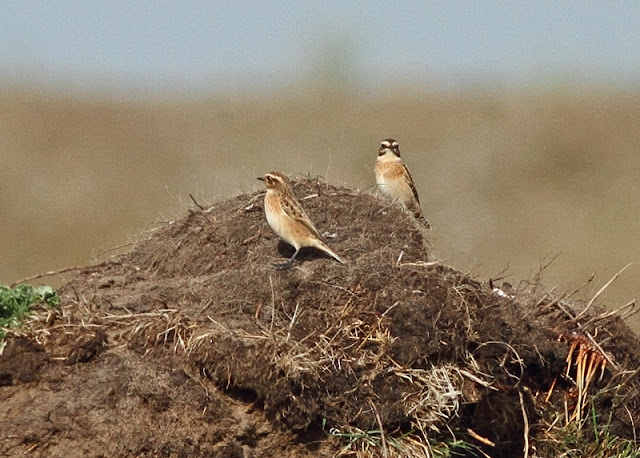There are about a million wrynecks in Kent at the moment and
I’ve not seen any of them. I suppose I could have twitched the one at Grove but
I wanted to find my own one. To this end I have spent the last few mornings looking
searching along the cliffs between Kingsdown and Hope point. It has not been a
resounding success.
The other problem was I didn’t want a distant view of one
disappearing into a bush I wanted a dopy cooperative one similar to that that
frequented Hope point a few years ago:
 |
| Here's one I took earlier |
On Monday I did the cliffs and a short spell in the gullies
at Sandwich, Tuesday the cliffs then Backsand and today the cliffs and
Restharrow.
On Monday I’d seen very little until I got to the garden of
Ship House (by the back entrance to the golf course) there I found chiffchaff,
a garden warbler, lesser whitethroat plus 2 spotted flycatchers which was
rather nice (though I only managed a poor shot of the garden warbler).
 |
| Garden warbler |
I then moved onto Hope point and had a chat with Brendon –
quite a few whitethroat (both kinds), a
couple of whinchat but no wryneck. I had another look at Ship House garden and
saw the flycatchers again but nothing else of note so departed for Sandwich. On
arrival I found Steve Raynaert and Alan Ashdown looking for a wryneck that had
been seen a few minutes earlier (not seen again) and I then heard that a Western Bonelli’s
warbler had been found exactly where I had been looking just 30 minutes before.
To rub salt into the wounds someone spotted a wryneck along there as well.
They say better to be lucky than good.... well I managed
neither.
Tuesday, undaunted, I was back on the cliffs to resume the
search. Very much as before with not much seen until Ship House gardens where I
found 2 pied and a spotted flycatcher:
 |
| Pied flycatcher |
Another search at Hope point yielded several lesser
whitethroats but no wryneck.
Around midday I went down to Backsand. High tide on Tuesday
was 16.30. I wasn’t going to be able to stay till then but most birds normally
come into roost 1-2hrs before the top of the tide so I expected to see most of
whatever was going to come in.
When I arrived 59
lapwing, 16 redshank, 1 green sandpiper and a snipe were already in residence
as were 7 widgeon. The numbers then slowly climbed to 48 redshank, 13
greenshank, 2 green and 2 common sands but in general everything was on the far
side of the scrape.
The 2 common sands came in very noisily and landed ~ 20
yards away and almost immediately 2 little stints landed alongside them. They
only stayed a few moments then moved to the far side.
 |
| Little stint |
The rest of the session (until 15.30) was spent hoping they
would come close and watching for any other arrivals - 3 dunlin and a wood sand
turned up but they too landed miles away.
It was close to being a photographic “duck” when one of the stints had a fly
around the scrape then landed right in front of me where it fed for 10-15
minutes.
As the saying goes “Everything
comes to those that wait”.
Today’s outing along the cliffs was pretty unproductive but
I did find both spotted and pied flycatcher in the garden.
 |
| Spotted flycatcher |
Warblers in general
were few and far between the only exception being common whitethroats – I found
a group of around 10 at hope point; it looked as if a couple of families had
combined because a lot of them were youngsters. I did find a very dull looking
willow warbler (strong eye stripe, pale legs and what appears to be a long
primary projection).
 |
| Willow warbler |
I didn’t hang around but popped along to Restharrow by way
of a change. It was very quiet there as well though at last I saw the water
rail:
 |
| Water rail |
So I missed the Bonelli’s, and failed in my wrynecks quest despite
them being found all around me but the little stints were nice. C’est la vie.


















































